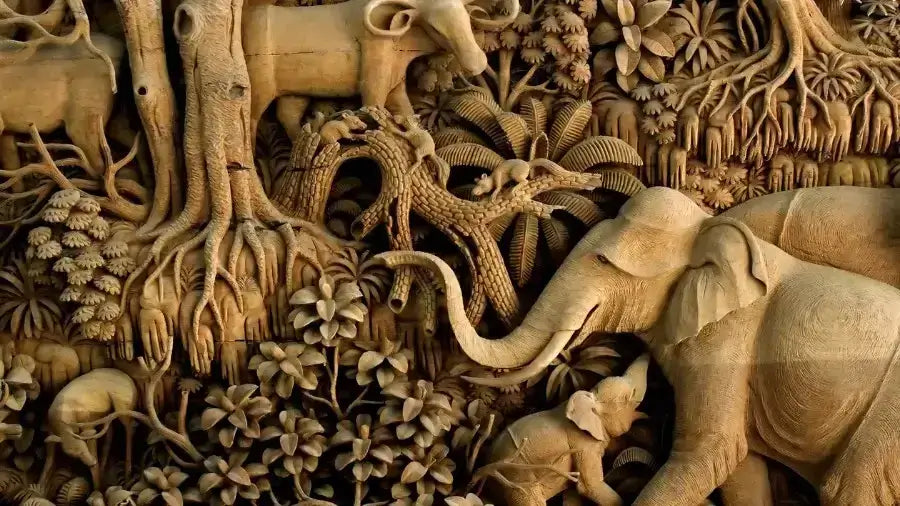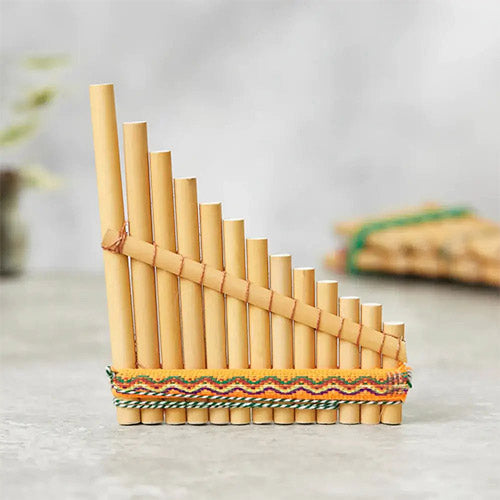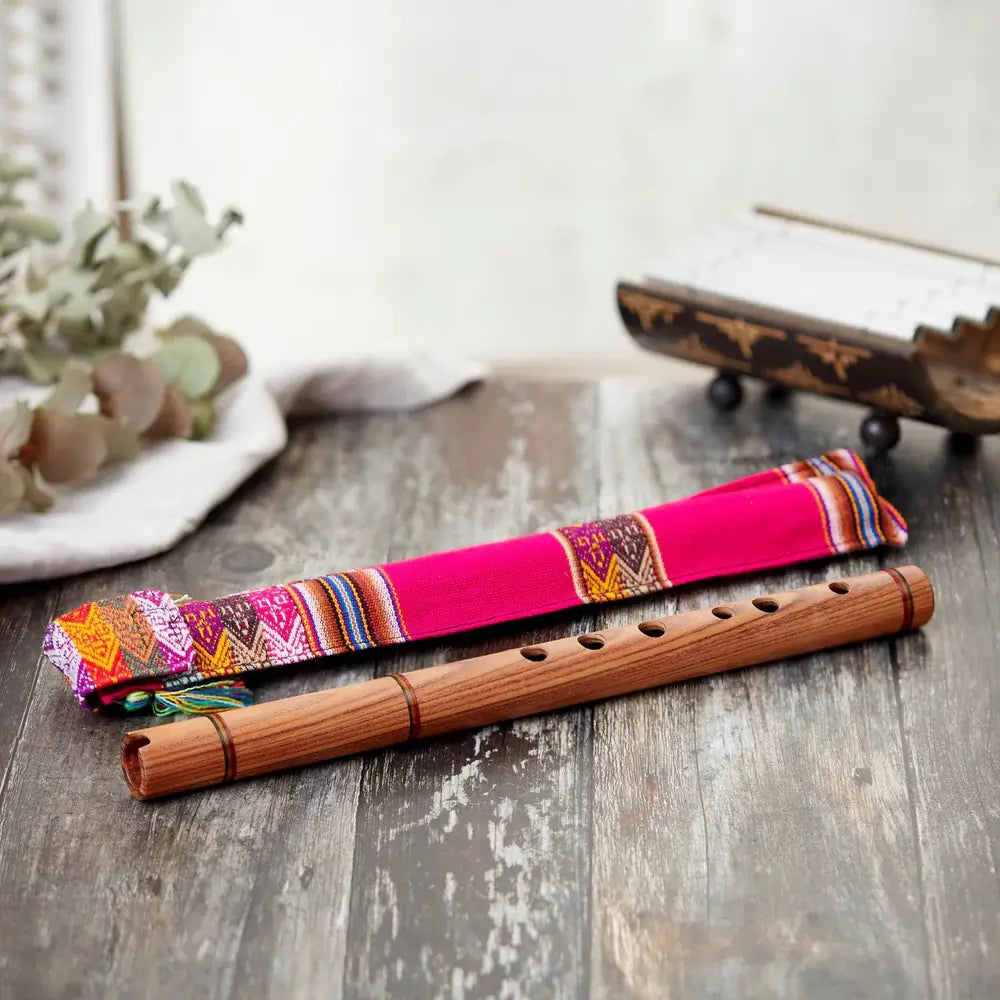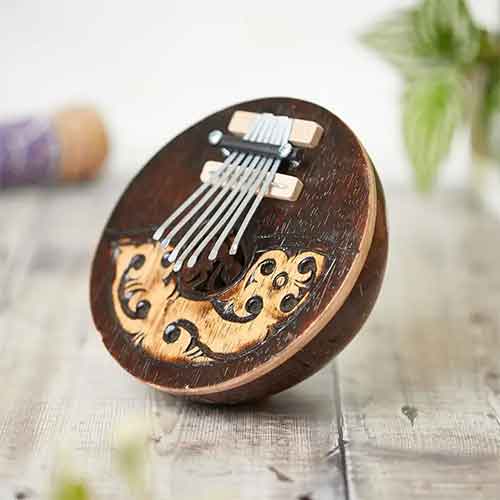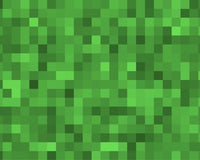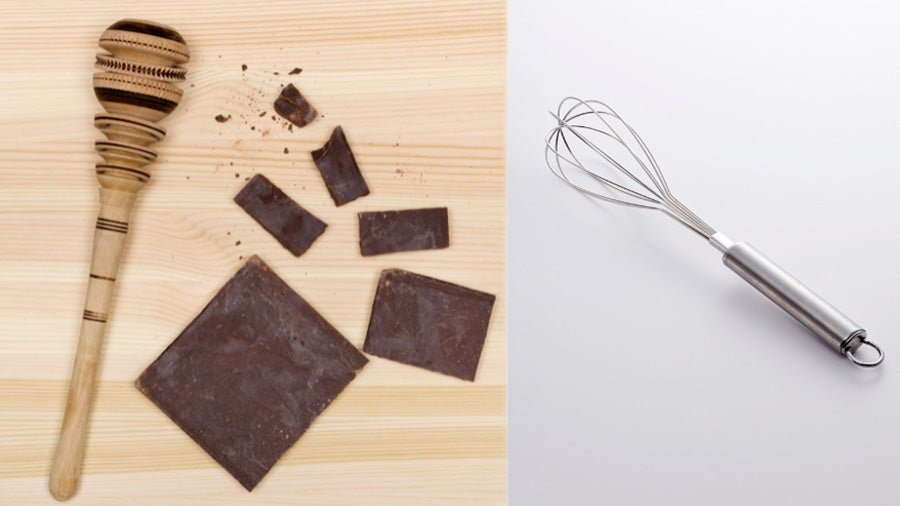My introduction to learning how to carve something out of wood was several months after Christmas. The living tree that was once in my living room with gifts underneath it, was now dry, dead and laying on my patio. I couldn't bring myself to get rid of the tree and the huge trunk got me thinking about how I could reuse it.
Without any knowledge I began removing thin branches and scraping away at the bark with a chisel to reveal the wood underneath. Long story short, I ended up making a small elephant and some candle holders out of the Norwegian spruce wood, I listed them online for sale and I kept them on a shelf until they sold. This wood was very difficult to work with and I have learnt a lot since then.
The following Christmas I was gifted a book on whittling that had many woodcrafts that you could make and since then I have been carving away at different types of wood to make spoons, ornaments and more. Whilst dangerous, wood carving is a fun hobby and it always feels good being able to make something.
As well as selling hand carved items to our customers, we want to provide more value to you by teaching what we have learnt over the years. Below you will find resources that will help you get started on your wood carving journey, please ensure to read the health and safety notes before proceeding. This is the wood carving for beginners course.
Health & safety
Carving is not easy at all, it can make your hands ache worse than the gym, It is very dangerous and should not be done if you are not qualified to do it. You must always ensure to follow good practices for health and safety. Not just from this article but you must do the research necessary so that you can handle sharp tools safely.
Storing your knife correctly should be your number one priority, never keep knives or tools laying around as they are very sharp and could easily cause harm to others. Many woods are in some form toxic and could irritate your eyes, skin, and lungs so you should always wear a face mask that offers protection against the dust fibres, protective gloves that will prevent injury to your hands and goggles so that you can protect your eyes.
The safety equipment you need will vary from project to project but it is important that you understand the dangers and potential hazards. Choosing a safe place to carve is also important and you will need to carry out your own risk assessments before starting to carve. If in doubt, seek advice from a qualified professional. Carving anything out of wood is done at your own risk and we take no responsibility for your negligence.
The best tools for woodcarving

In regards to tools, I was slightly limited, back when I made an elephant out of a Christmas tree. I used an old blunt chisel, which I would not recommend at all. I quickly made a decision that I should buy a Swiss army knife as recommended in a whittling book. The knife was cheap and allowed me to get carving straight away. There are a few positives and a few negatives to the typical Swiss army knife that I'd like to share with you.
Swiss Army knife

The Swiss army knife is a multipurpose tool that is sharp and is capable of being used to carve wood. There are many tools on the one knife which means that this can easily be used for many jobs, on top of that It is extremely affordable. Overall the knife is strong, well made and can be sharpened if it becomes blunt. The negatives are that it is small, uncomfortable to hold when using it for carving for long periods of times and as the blade folds to put it away it can easily cut you by mistake.
I have cut myself more than five times with this blade and it happened the same way every time. I applied pressure when carving a piece of hardwood and the blade retracted cutting my finger. My opinion is that despite it being a cheap option that is capable, a good knife is a safe knife. If you do go for this option, make sure you wear safety gloves.
Mora 106 Carving Knife

This tool is multipurpose and will be your main carving knife. It is strong, and has a wooden handle that is more comfortable to hold for longer periods of time. The knife is more robust than the Swiss army knife and I feel that you are less likely to cut yourself because it doesn't retract. That being said, the knife is always out which means that you have to ensure you put it back in its safety blade cover after use.
The only issue with this knife is its price, being a high quality knife you do have to pay the premium for it. A great alternative is the Mora 122 which is often cheaper due to the blade being slightly smaller. There are many cheaper alternative brands but I do not recommend them as the blade are not that great and you will be making carving more difficult for yourself. Despite this one tool being so multipurpose, and now I do use it all the time. I did find that it was not such an all-rounder and especially for spoons, a tool you will need is a hook knife.
Mora 164 Hook Knife

This tool is very good at carving out the wooden bowl of the spoon. A really good sharp hook knife for a professional can be quite expensive however using the cheaper ones will make the process of carving out the bowl a lot more challenging. I learnt the hard way and brought the cheap ones as a set and had to buy them again because they were terrible.
Wood carving chisel set

Chisel sets range from about 15 pounds to 100 pounds and usually you get what you pay for. Buying a cheap set will mean that achieving the carving you want will require more work in comparison to a more expensive set. The sweet spot is around £40, this will get you about four great chisels that you can use to not only carve wood but to also add texture and stylise the wood.
Other useful tools
Fine sandpaper is useful for finishing projects as it will help make the wood soft and smooth. Sanding the bowl of a finished spoon is a must to achieve that finished look. You will need a pen or pencil for marking out your design on the wood before carving. When making a spoon, you will want to draw your bowl before carving as it will be your template.
Super glue is a useful tool that you can put on the edge of a carved wooden knife to make it stronger. After it has dried you can sand off the excess, the glue will help the wood stay in shape by hardening it. A wood burner is great for personalising projects with names and designs.
A clear polyurethane finish is a must if you want to protect your piece. Some projects won't need it but some will. You may also want to apply a food grade finish if you plan on using the wooden item for food purposes.
Sharpening tools such as wet and dry sandpaper of various grits from 320 grit to 600 can be useful for sharpening knifes. When sharpening you should start with a courser grit and then use the finer grit. Alternatively, you can also use sharpening stones to do this and the knife can be buffed afterwards with a piece of leather.
Basic carving cutting strokes

There are many ways that you can use a knife to carve wood but we are going to discuss the three main ones that you will be using for pretty much every project. The easiest way to carve is with the straightaway cutting technique and the most difficult is the draw cutting technique.
Straightaway cutting
The main way that you will be carving is using a straight cut. This cut helps remove a lot of wood or bark - you can achieve this by holding the wood in one hand and cutting along the wood with the other hand whilst keeping your wrist locked in place. The knife will be moving away from you, and you will end up with lots of wood shaving in front of you.
Thumb pushing
The carving with the thumb pushing technique is less about removing lots of unwanted wood and more about adding little detail that can outline the finished piece. For this example, the knife is held in the right hand, and the wood is in the left hand. The thumb grips the back of the blade, and at an angle, the knife goes down onto the wood, and the thumb pushes it from back to front or front to back. Whichever is easiest for you. This allows for small strokes with precise control. This cut is excellent for designing a piece and for removing bark in specific places.
Draw cutting
This carving style is for more advanced carvers as it involves cutting the wood towards yourself using your thumb further away as a brace. I was introduced to this technique not when I started carving but when I saw my nan peeling potatoes one time. It is the cutting that looks dangerous and is dangerous.
If you don’t feel comfortable trying this carving technique, I don’t blame you, especially considering there are other ways to achieve the same look. If you want to try it, hold the wood in your left hand, use your thumb on your right hand as a brace to hold the wood still. Your thumb should be positioned on top of your left hand and not on top of the wood, and in short, strokes, begin carving. Now that you have learnt the three basic cutting strokes, you are ready to begin carving.
What wood is best for carving?

Whilst you can use almost any wood for carving, including twigs and scrap wood that you find. Some woods are better for the job in terms of the strength and aesthetics of the wood. Some other important factors are that, universally, the wood you choose should be straight-grained and free of knots because carving wood containing knots is challenging due to its hardness. Also, the wood should be relatively dry.
Whittling wood that is damp will likely cause the wood to snap when you apply pressure, and the same could be said for overly dry wood. Good wood doesn't have sticky sap on its surface. An example of a wood that contains a lot of sap is pine, and whilst it is possible to use pine wood for carving, you will likely end up having to clean your hands and knife a lot.
Preparing the wood
Some branches you find will likely be dusty, dirty, or even contain fungus, but that can easily be fixed with a cloth and water. Working with clean wood is better, and removing the dirt from the outside of the bark will reduce the risk of transferring it to the clean inside piece that will make up your finished piece.
Wood species
Some woods are better than others to work with, and whilst nearly every wood can be carved, using suitable wood will give you better results, help you achieve the look you want, and make the experience more enjoyable. Some wood species can also be toxic and can irritate the eyes, skin, and lungs, so if you are using wood that you're unsure about, you should wear protective goggles, a face mask and gloves to be on the safe side. You should avoid those with a strong scent as some contain a type of chemical within the odour that can cause headaches.
Maple

There are many varieties of maple, some that are softwoods and some that are hard. Maple timber is strong, is usually straight-grained and can be challenging to carve. Despite its cheapness, it is often used to mimic more expensive woods, making it an excellent choice for carving.
Oak

Oak is a popular choice for carving mainly due to its long term durability. Even after ten years, it will still look new. It is not as simple as carving with basswood or pine because oak is tough. Working with oak and trying to shape it isn't easy. For inexperienced woodcarvers, you will likely end up damaging your carving tools many times again due to the hardness of the wood.
Carving with oak is recommended only for experienced carvers and is probably the worst wood for your first project. On another note, oak is non-toxic and food-safe. It can be used for almost any purpose and offers a beautiful, attractive colour. Pin oak, live oak and water oak are the best for wood carving. Red oak is not great because of its open grain that is wavy.
Beech

Beech is a beautiful wood for carving, and it is strong, heavy, and straight grained. Even though this wood is hard, due to its common issues with fungus, it is often bendable and, in some cases, can even be brittle, which means that you have to be extra careful not to snap your piece. Beechwood is typically used for flooring, furniture and veneer.
Holly

Holly wood (the wood, not the place) is usually used for making piano keys, furniture, broom handles and other ornamental items. Holly wood must be seasoned properly before being used for carving projects. The wood is an attractive ivory white colour, is heavy, smooth and looks clean.
Citrus

Many citrus trees are great for wood carving. To name a few, these are Lemon, orange, tangerine, and grapefruit. The wood from an orange tree will require sharp tools, and you will find that carving this wood will take longer simply because of how hard and dense the wood is. Lemonwood is a close-grained hardwood that is so strong that it is often used for making archery bows and fishing rods.
Myrtle

Myrtle is another hardwood that will require sharp tools. This wood is best for carving figures and statues as it has a tight grain.
Cherry

There are many cherry varieties, and most domesticated and wild cherry are great for carving. Cherry wood is a fine carving wood that is reddish-brown and is an attractive wood to carve. It is known to shrink a lot after drying but once dried. The wood will remain stable. The timber is often used to make furniture, kids toys, musical instruments, and more. Cherry wood is usually used to smoke foods such as meat since it gives off a pleasant flavour.
Birch

Most varieties of birch are great to work with, and it is one of the most popular types of wood for carving. It is hard, has a fine grain, a natural shine and is typically used as firewood due to its high energy value per unit and volume. It is often widely used for flooring because of its strength and beauty, but the negative to birch wood is that if it is not dried correctly, it is known to warp and, in some cases, crack.
Basswood

Basswood is considered to be one of the best woods for beginner carving. The reason why is because even though it is hardwood, it is softer than the other wood types mentioned above, thus making it easier to carve. It is cheap, which means that it is excellent for your first whittling project, but the negative is that the wood has little to no grain and lacks character.
Mango wood

Wood from the Mango tree is one of the most sustainable woods that you can get. It is one of the most beautiful; however, it is not readily available in England. It typically grows in Asia, Mexico, Brazil and Australia. It is considered easy to carve, and it is just as sturdy and hard-wearing as oak. Although it flourishes better in humid environments, it can warp and crack if the wood becomes too dry.
Walnut

Black walnut is used for high-end luxury wood carving and is one of my favourites. The wooden timber is costly, and as it is more robust than most woods, you will need sharp tools and a mallet to work with it. Walnut wood is famous for its grain and colour that is typically dark brown to purple. The negatives apart from its cost is that the wood is heavy, hard, stiff, and the colour variation can be inconsistent, ranging from light to dark throughout the same plank.
Beginner Hand Carving: Spoons

Since founding our company, I have always been fascinated by carved wooden products, especially those belonging in the kitchen. I love to cook, experimenting with different ingredients and exploring cultural foods. The first thing I ever hand carved was an elephant out of an old Christmas tree but after that I was gifted a book by my mother in law that had all types of different carving in it.
When I saw the carved wooden spoons, that was it, I knew that carving a wooden spoon was going to be my second project. My first attempt at making a spoon, was poor, the wood had split and the spoon was not usable but this is expected with a first attempt. Practise makes perfect, as with anything new.
How to carve a spoon?
- Find a straight knot free branch, it should be slightly longer than the desired length of your spoon.
- The branch's diameter should be thick enough to make a spoon.
- Flatten one side of the branch using long strokes, this will be for the top of your spoon
- Using a scooping stroke, flatten the bottom of the handle leaving the end of the branch thick for making the bowl of the spoon.
- Draw your spoon with a pen or pencil on the top of the spoon.
- Cut around your spoon to shape the handle, and remove bark from the underside of the bowl.
- Shape the bowl of the spoon, cutting off any lines that you have drawn.
- Draw the perimeter of the spoon's bowl and with the point of the knife carefully cut inwards around the line, or alternatively use a hook knife to hollow it out.
- Once it has been hollowed, with fine sandpaper you will need to sand the entire spoon.
- Finally you will need to oil it or treat the wood with a finish to make it food safe.
Beginner Hand Carving: Elephant
I was looking at our stunning hand-carved products and thought wow, people actually carve these, how long must it take to make even one? Without doing any research on how it's done or the tools that I would need I set off to start a project for myself. I went to my front patio and looked down at the Christmas tree that we had dumped five months ago.

I took the tree from the pot, started to get rid of mud from the surround root, and after cleaning it, I had to decide on how big the root log should be, and I cut it as clean as possible using a handsaw. I took the tree from the pot, started to get rid of mud from the surround root, and after cleaning it, I had to decide on how big the root log should be, and I cut it as clean as possible using a handsaw.

Not knowing what I was going to carve, it looked like a perfect lamp and as I started carving, that is what I was working towards, however with no electrical knowledge myself, even knowing an electrician, and the lack of tools I decided that if I was to make a stunning wood log lamp it might end up as one of those projects that never get finished.

Using nothing other than a blunt chisel and a hammer I started taking off pieces of bark to reveal the natural wood underneath. This was a whole lot of fun but I admit it was very hard work due to the labour and the constant mess, it took two full days to complete.
Whilst scraping off the bark I tried to visualise what I could make, there was one piece that to me that resembled a trunk from an elephant and so I went with it and started planning where the legs would go with a pencil etc and began chipping parts of wood away.
After carving out all of the wood from in-between the figures legs, I stood it up and it was extremely slanted, I then chopped the longer ones to make it even, gave it an all-round sand to remove rough sharp edges, and flaky pieces of wood. I wiped off the dust and finished it by rubbing avocado oil all over which brought out the woods natural grain.

As you can see it has undergone quite a lot of processing, and again this was a lot of fun but I will either have to get some better tools or simply leave it the professionals. This was one of my first carving projects, and I made this elephant using a chisel. However, this is possibly the worst and most dangerous way to carve. If you want to start carving your own ornaments, wooden spoons, etc.
I would highly recommend that you go for a tool that is more suited to the job, like an actual carving knife. It will allow you to cut away at the wood easier and won’t stunt your creativity. Please make sure you follow safety procedures when making anything, use protective glasses, gloves, or mask when appropriate. Be extremely careful when handling tools and if in doubt consult a professional.
Up next: How to Make Bamboo Straws (Tutorial)

